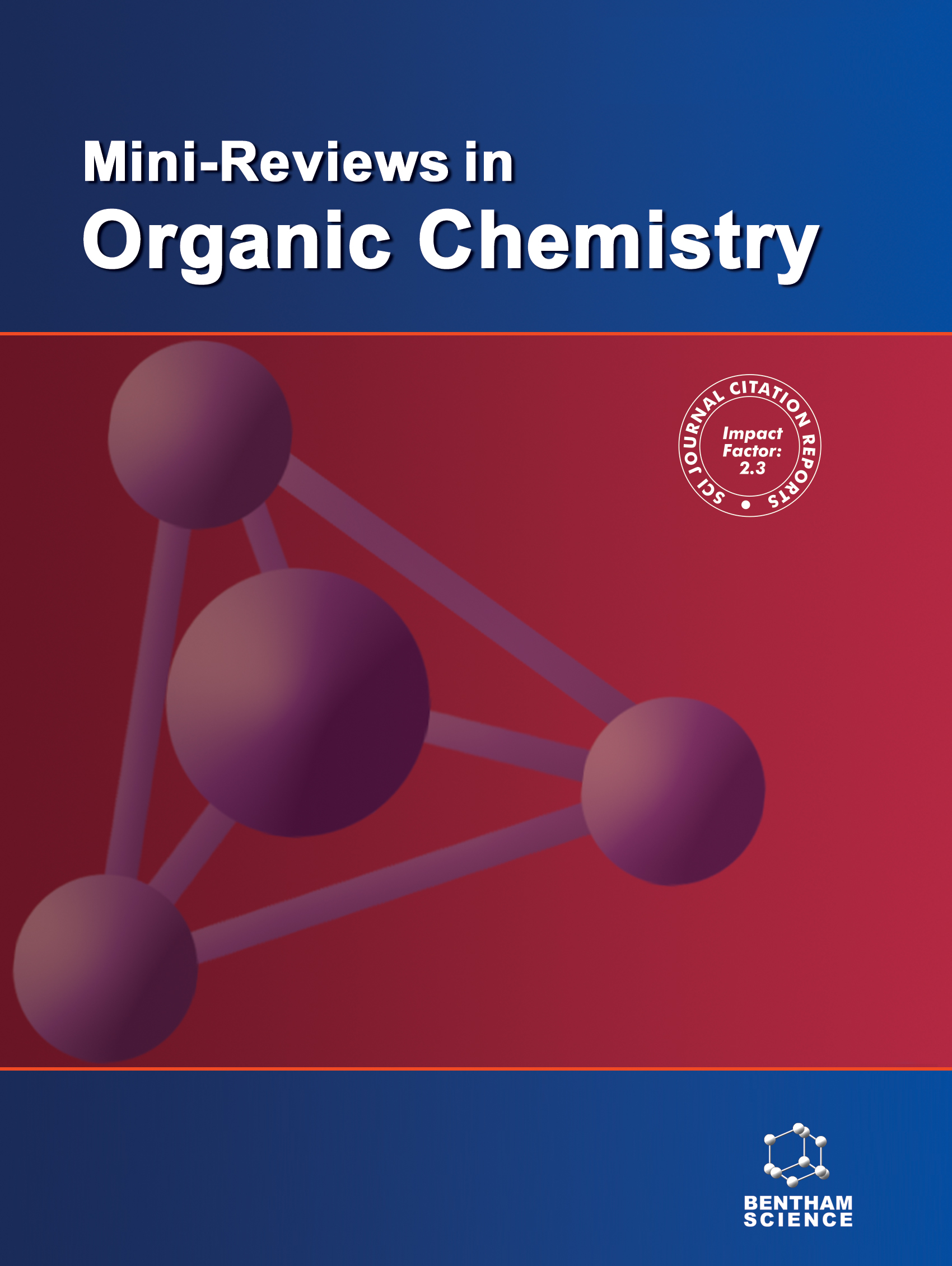- Home
- A-Z Publications
- Mini-Reviews in Organic Chemistry
- Previous Issues
- Volume 21, Issue 6, 2024
Mini-Reviews in Organic Chemistry - Volume 21, Issue 6, 2024
Volume 21, Issue 6, 2024
-
-
Diphenyl Ethers: Isolation, Bioactivities and Biosynthesis
More LessAuthors: Bing Liu, Yuxin Wang, Ning Chen, Chenxue Li, Jintong Zhao and Ting LiDiphenyl ethers (DPEs) are mainly produced by microorganisms and plants. The chemical structure of DPEs is relatively simple, and all of these compounds have the structure of biphenyl ethers in their chemical structure, the difference being the difference in the substituents on the benzene ring. Several recent studies have shown antibacterial, antioxidant, antitumor, antitumor, antihemolytic, neuroprotective, and anti-Alzhei Read More
-
-
-
Recent Advances in Transition Metal Catalyzed Synthesis of C3-Substitution-free 2-Oxindole Derivatives
More LessAuthors: Partha P. Das and Debapratim Das2-Oxindole unit is one of the most important scaffolds found in several alkaloids, natural products, antitumor agents, pharmaceutically important compounds, etc. Molecules containing the 2- oxindole moiety were first isolated from the cat claw plant, widely distributed in the Amazon jungle. It has now been demonstrated that these molecules are present in a wide range of chemicals derived from plant sources. The capacity of Read More
-
-
-
Recent Developments and Challenges in the Application of Fungal Laccase for the Biodegradation of Textile Dye Pollutants
More LessAccording to the European Environment Agency, the textile industry is responsible for 20% of global water pollution due to dyeing and finishing products, thus facing severe environmental challenges. It is essential to design more biocompatible and sustainable treatment processes capable of removing dyes from industrial wastewater to fight this environmental hazard. Chemical industries must change traditional chemical-b Read More
-
-
-
Laccase-assisted Bioremediation of Pesticides: Scope and Challenges
More LessAuthors: Chandana Paul, Nilasish Pal, Madhumita Maitra and Nirmalendu DasLaccase (Benzenediol: oxygen oxidoreductase; E.C.1.10.3.2), a multicopper oxidase that is a known lignin-degrading enzyme, can catalyse an ample array of substrates, from phenolic, nonphenolic compounds, aromatic amines, diamines, heterocyclic compounds to organic/inorganic metal compounds, etc., bestowed they have not too high redox potentials. Despite many laccase-producing organisms like bacteria, insects, pl Read More
-
-
-
Recent Advances in Synthesis and Applications of Organic Ionic Saltsbased Sensor Arrays
More LessAuthors: Pawanpreet Kaur, Anupama Parmar and Harish K. ChopraSensor arrays contain a group of sensors, improve observations with new dimensions, provide better estimations, and additional parameters in comparison to the individual selective sensor. The array-based sensing technique provides good performance to respond to various gaseous or liquid analytes. Room temperature ionic liquids (RTILs) (melting point <25°C) and Group of uniform materials based on organic salts (GU Read More
-
-
-
Chemistry of Thieno [2,3-h]-/[3,2-h] Quinoline and Thieno [2,3-f]-/[3,2-f] Quinoline Derivatives Part (x), Reactivities, and Biological Activities
More LessSeveral thieno [2,3-h] /[3,2-h] quinolines and thieno [2,3-f] /[3,2-f] quinolines (TQs) are discussed in this review from a few perspectives, including various preparation and processing methods employing cutting-edge machinery. The preparation of (TQs), from 4-(5)aminobenzothiophene, 2(3)chloromethylthiophene, 2(3)thienylboric acid, and other chemical reagents is illustrated via a number of chemical procedures in this Read More
-
-
-
Epigrammatic Review on Heterocyclic Moiety Pyrazole: Applications and Synthesis Routes
More LessBy Sapna JainHeterocyclic compounds are amongst the most promising and versatile classes of biologically important molecules. One of the heterocycle molecules is pyrazole with a five-membered heterocyclic ring with two neighboring nitrogen. Pyrazole and its derivatives have shown a broad range of biological applications like antibacterial, antifungal, antiviral, anti-inflammatory, anti-cancerous, and herbicidal activities. The study of Read More
-
Volumes & issues
-
Volume 22 (2025)
-
Volume 21 (2024)
-
Volume 20 (2023)
-
Volume 19 (2022)
-
Volume 18 (2021)
-
Volume 17 (2020)
-
Volume 16 (2019)
-
Volume 15 (2018)
-
Volume 14 (2017)
-
Volume 13 (2016)
-
Volume 12 (2015)
-
Volume 11 (2014)
-
Volume 10 (2013)
-
Volume 9 (2012)
-
Volume 8 (2011)
-
Volume 7 (2010)
-
Volume 6 (2009)
-
Volume 5 (2008)
-
Volume 4 (2007)
-
Volume 3 (2006)
-
Volume 2 (2005)
-
Volume 1 (2004)
Most Read This Month
Article
content/journals/mroc
Journal
10
5
false
en


